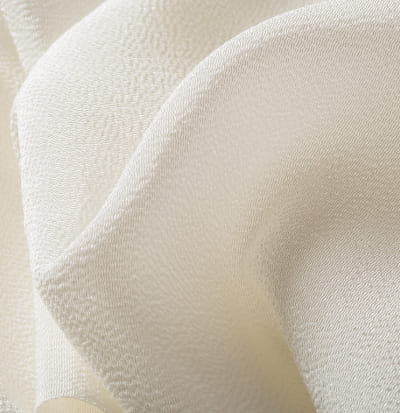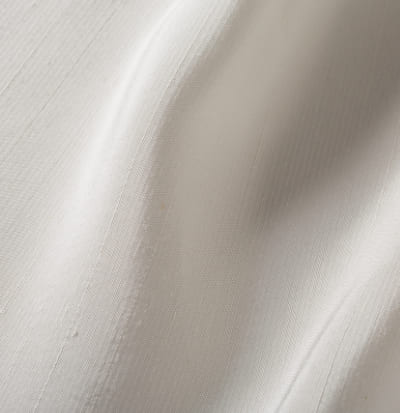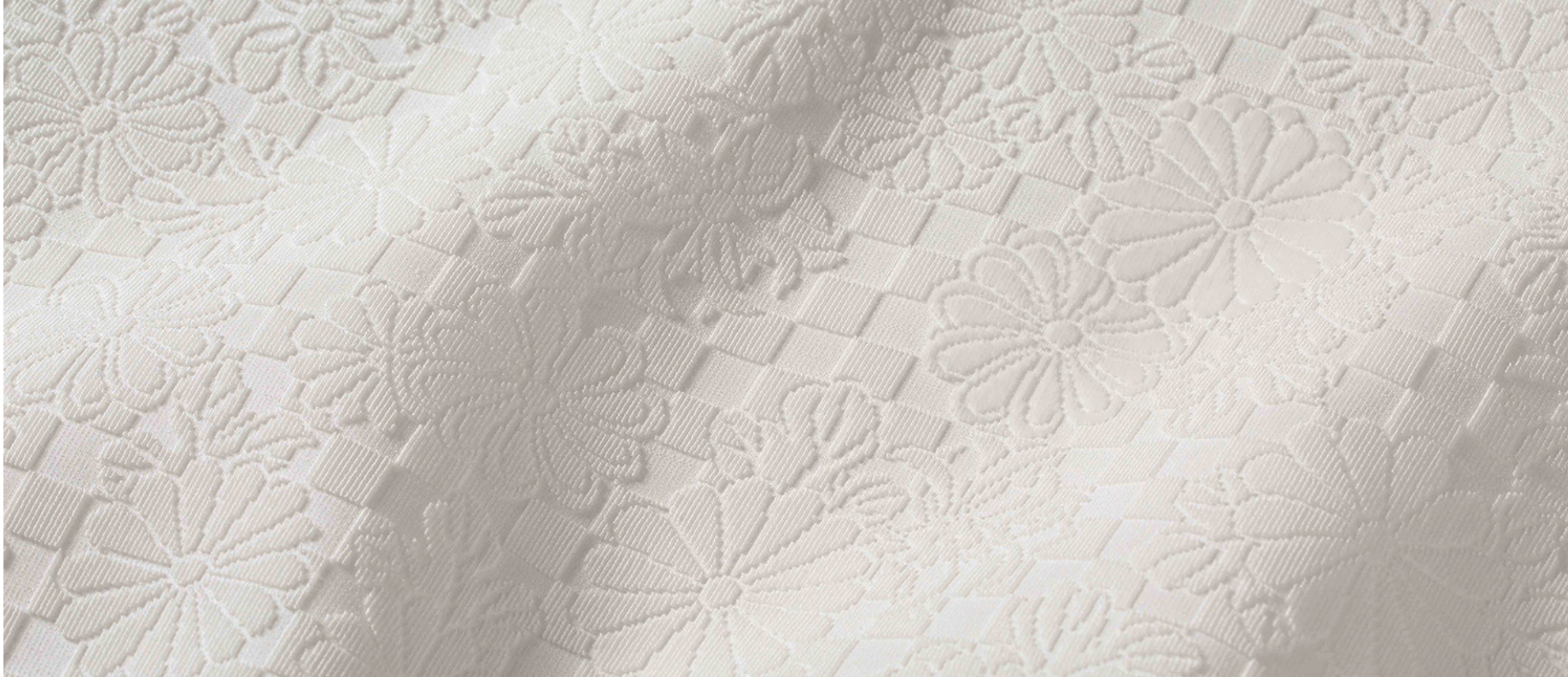
Wana velvet
A beautiful silk fabric
with loop called Wana
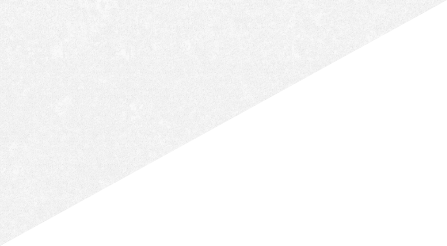

Wana velvet
Wana velvet
Wana velvet
of
History
Luxurious silk fabric
that fascinated even Nobunaga
It is said that Wana velvet was introduced from Portugal more than 400 years ago during the Tenmon period.
The mantles of this rare woven fabric gifted by missionaries fascinated the Sengoku daimyo including Nobunaga Oda.
It is said that production in Japan started during the Keian period of the Edo era.
In the mid Edo period, the production method was transmitted to Nagahama City in Shiga Prefecture, and then patterned weaving using jacquard looms began.
Since then, ingenuity has been made to take advantage of the texture of Wana velvet for kimono lining cloth, and Wana velvet coat fabric was born.
Today it is mainly used as the highest grade lining cloth for coats, and is designated as a "Shiga Prefecture Traditional Craft Product."
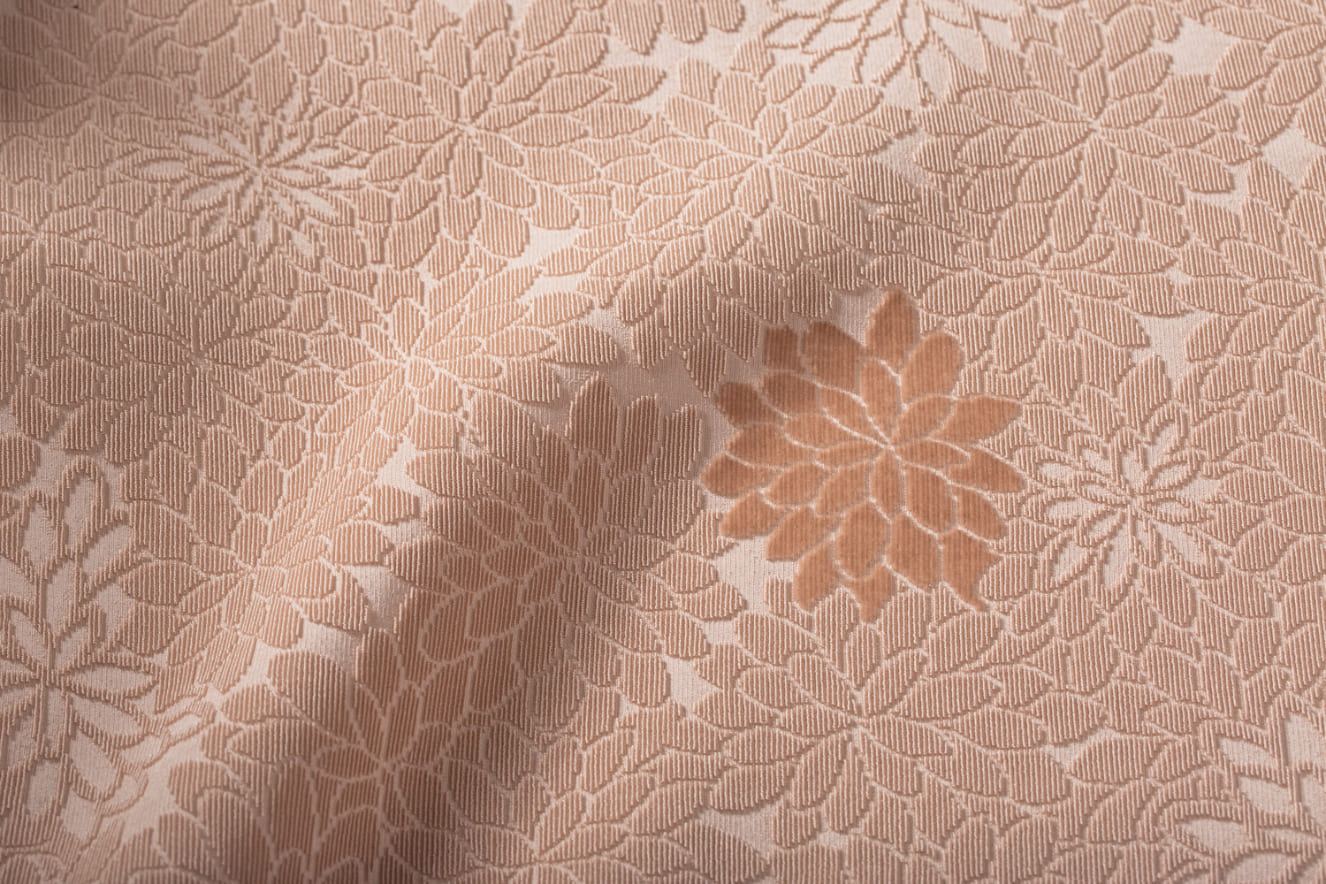
Mysterious fabric with uneven surface, Wana velvet
Wana velvet is a mysterious fabric with an uneven surface. The unevenness of the fabric surface is created by forming a pattern with loops called Wana (similar to the pile of a towel). Wana velvet has an elegant gorgeousness, is light to wear, and the softness of the Wana loops provides a smooth feel. It gracefully wraps both the wearer and viewer in comfort.

PROCESS
weaving
weaving
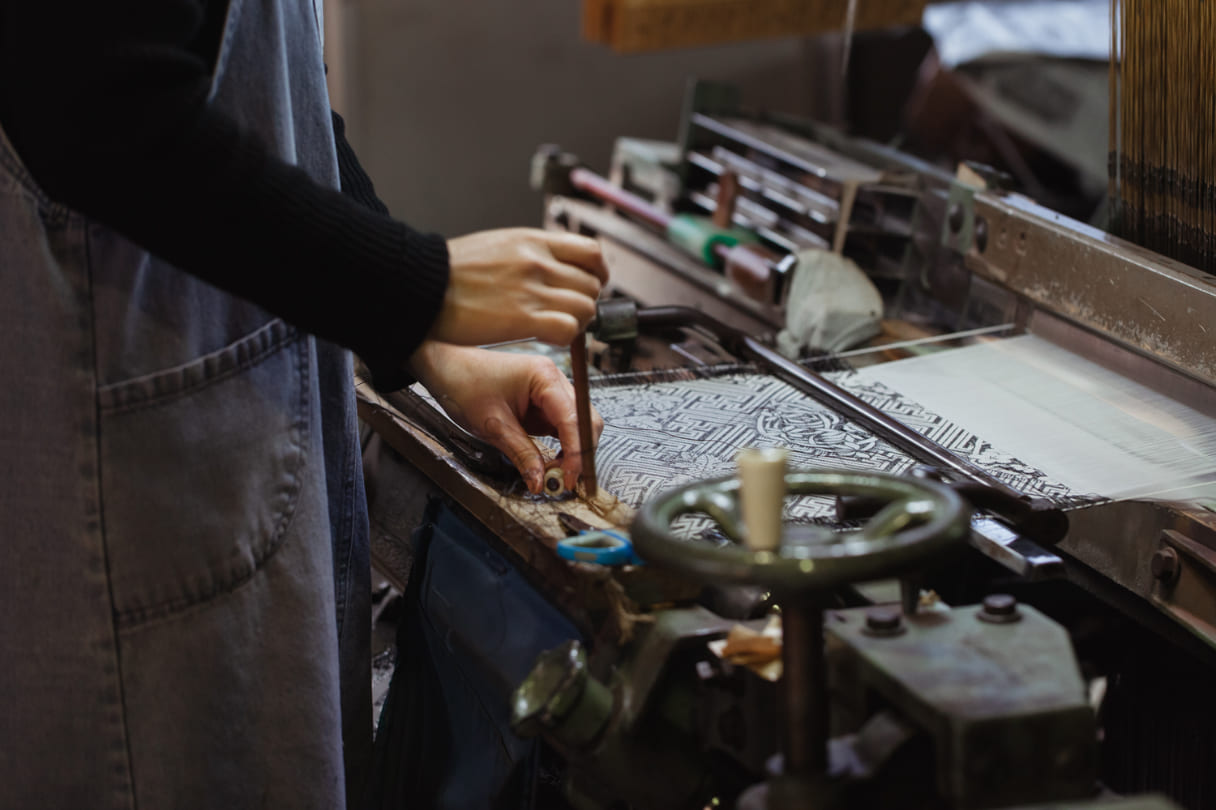
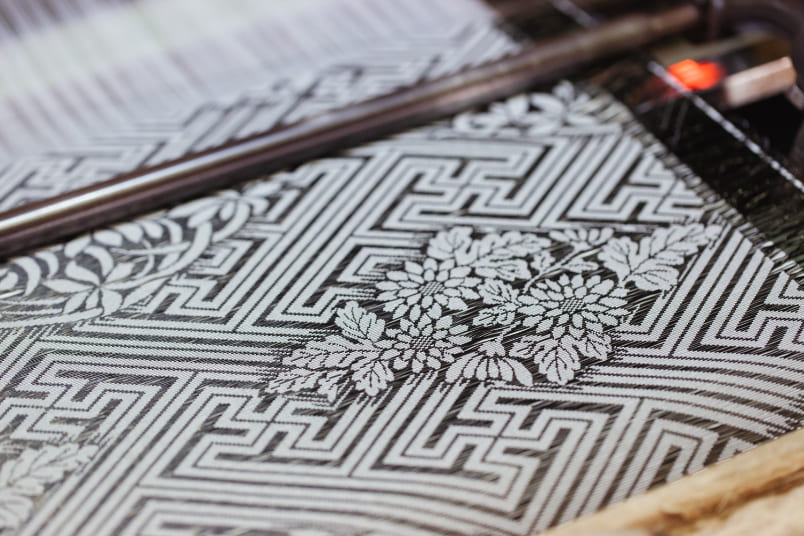
Fabrics are made by combining warp and weft yarns. Wanna velvet has loops called wanas on the surface of the fabric, and the pattern is created by the arrangement of the loops. This is one of the characteristics of Wanna velvet. The warp threads are woven in such a way as to hold the core material in order to create the looped loops. It takes two to three days to weave one kimono coat fabric (H 1,150 cm x W 39 cm).

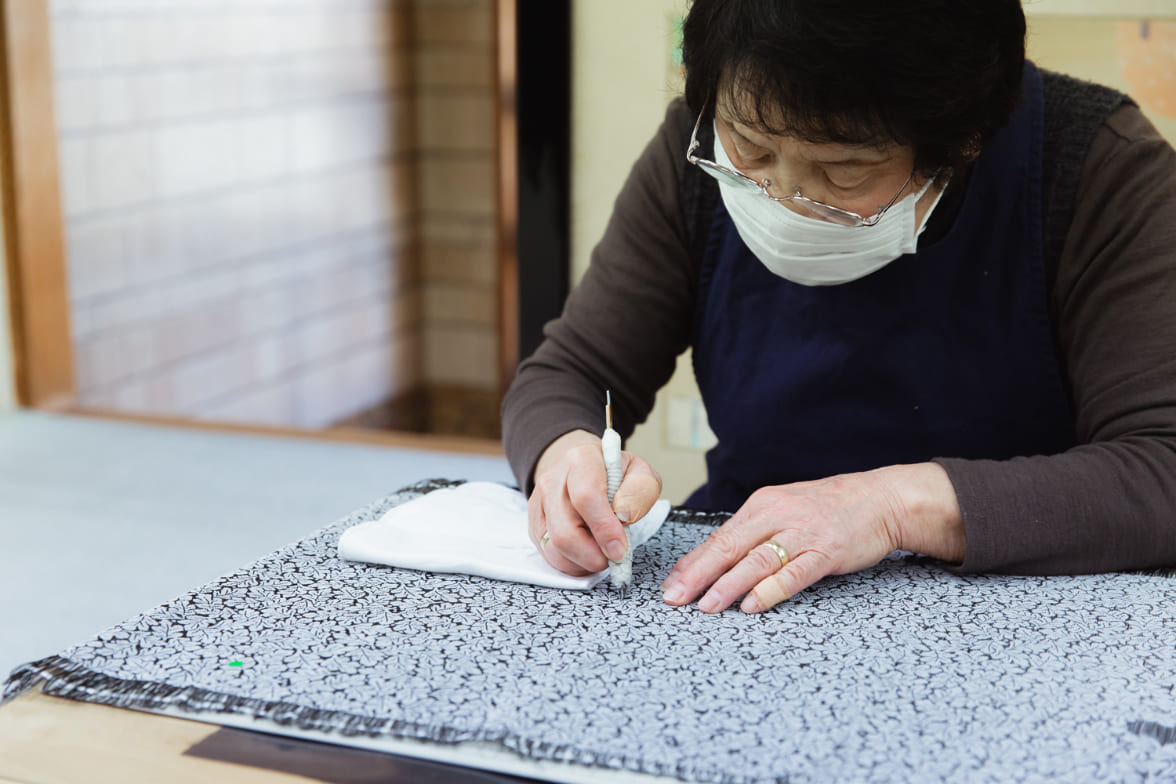
pattern cutting
pattern cutting
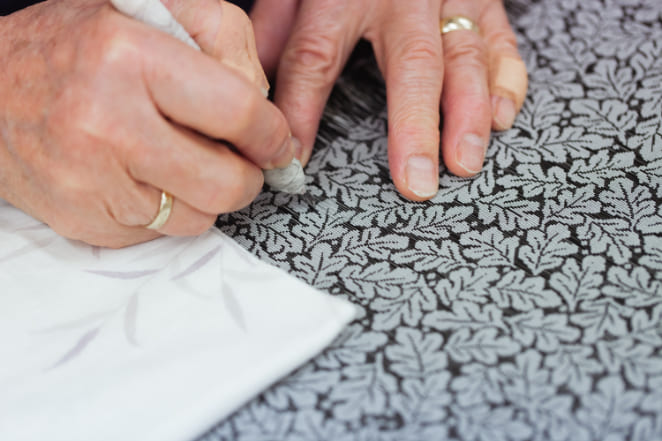
After weaving, the warp threads of the wana, which contain the core material, are carefully cut by hand, one by one, using a special cutter-like tool called a small knife. If the center (top) of the wana is not cut at this time, it will not be finished beautifully when dyed, and this depends on the hand of the craftsman and the angle of the blade of the small knife. This process opens the threads of the wana to form the velvet part.
After weaving, the warp threads of the wana, which contain the core material, are carefully cut by hand, one by one, using a special cutter-like tool called a small knife. If the center (top) of the wana is not cut at this time, it will not be finished beautifully when dyed, and this depends on the hand of the craftsman and the angle of the blade of the small knife. This process opens the threads of the wana to form the velvet part.





pinhole
pinhole
All the interlining material is removed from the fabric after the crest cutting process. About 15,000 core materials are woven into each 1,150 cm long piece of fabric. Needle removal is also done by hand. Holding the fabric with the left hand, the right hand pulls out the interlining material at an exquisite speed. While pulling out at a constant speed, we pay attention to whether there is any discomfort in the feeling of pulling out compared to usual. Even a slight snag in the fine raw silk can cause damage.

scouring
scouring
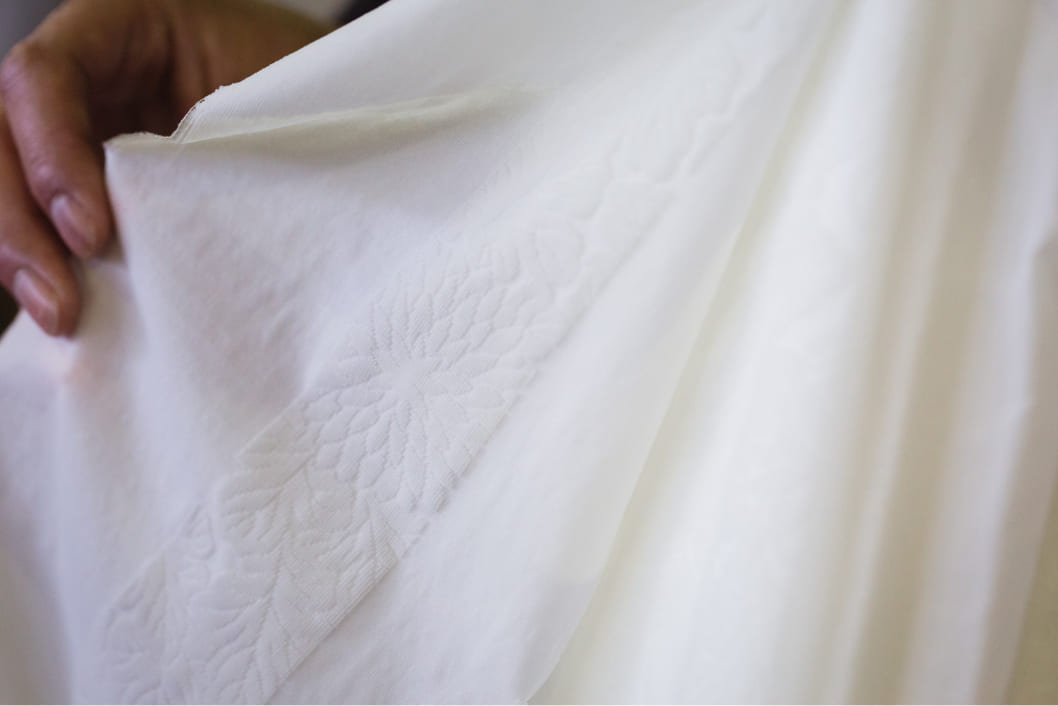
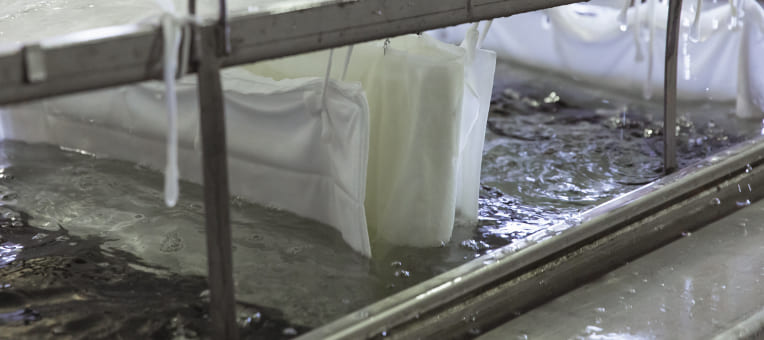
After needle removal, the fabric is called kibata (raw fabric), and is not yet a pure white fabric. It becomes white through the process of scouring. In the scouring process, raw silk is boiled at high temperature to remove the component called sericin. If pressure is applied to Wana while it is still wet, the Wana made will be crushed. Therefore, in the scouring of wana velvet, great care is taken not to crush the wana. Through this process, the silk’s original luster and suppleness appear, resulting in a beautiful white fabric.
After needle removal, the fabric is called kibata (raw fabric), and is not yet a pure white fabric. It becomes white through the process of scouring. In the scouring process, raw silk is boiled at high temperature to remove the component called sericin. If pressure is applied to Wana while it is still wet, the Wana made will be crushed. Therefore, in the scouring of wana velvet, great care is taken not to crush the wana. Through this process, the silk’s original luster and suppleness appear, resulting in a beautiful white fabric.


coloring
coloring
WANNA velvet is dyed after weaving, which is called post-dyeing. In this process, not only plain dyeing but also various color dyeing such as blending dyeing is applied. The parts with and without waina, and the velvet parts are dyed darker than the other parts because more dye enters from the cross section of the threads cut by the pattern cutting process.
WANNA velvet is dyed after weaving, which is called post-dyeing. In this process, not only plain dyeing but also various color dyeing such as blending dyeing is applied. The parts with and without waina, and the velvet parts are dyed darker than the other parts because more dye enters from the cross section of the threads cut by the pattern cutting process.


